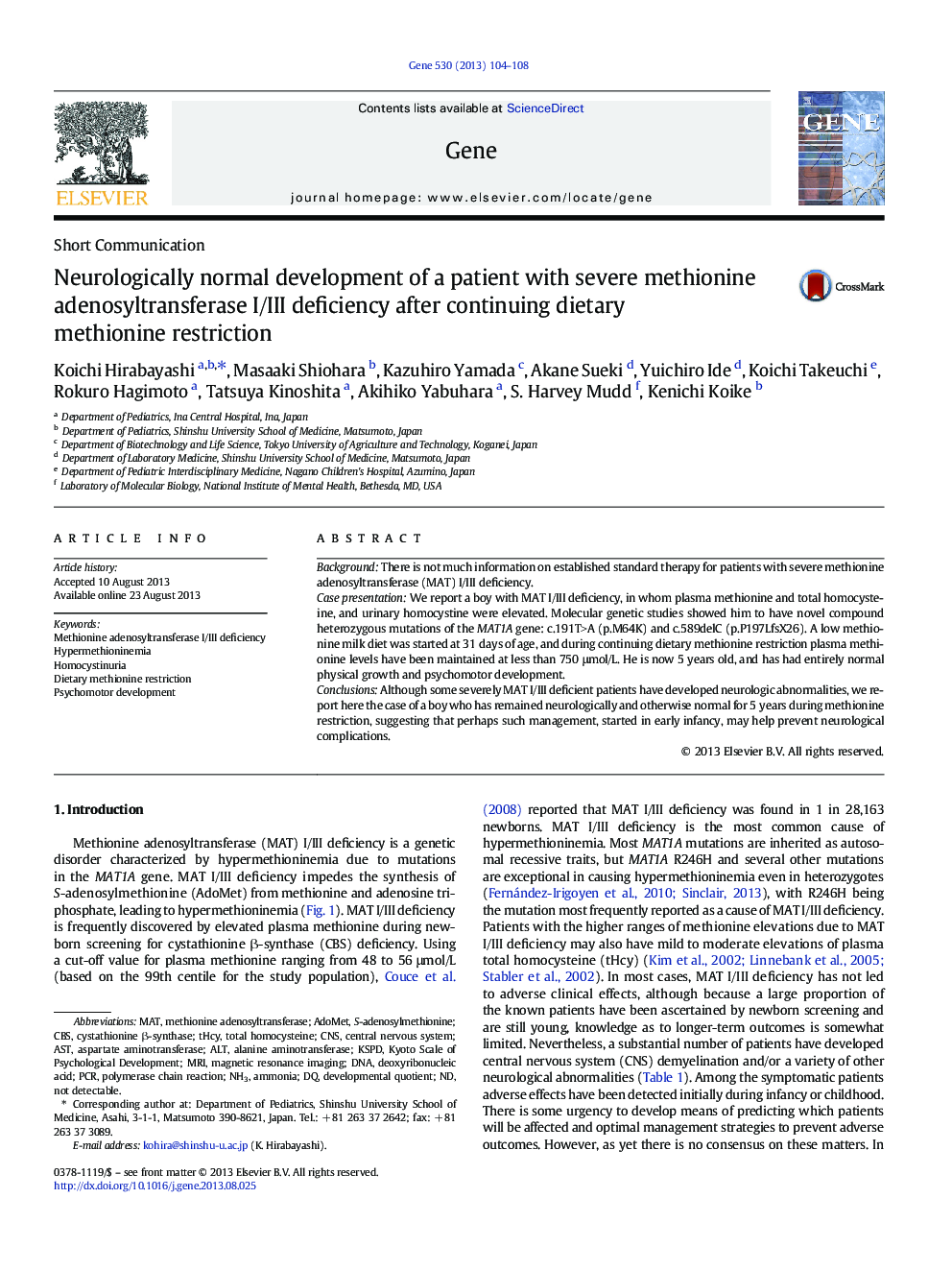| Article ID | Journal | Published Year | Pages | File Type |
|---|---|---|---|---|
| 2816950 | Gene | 2013 | 5 Pages |
•We report a case with severe MAT I/III deficiency, who had homocystinuria.•We identified novel compound heterozygous mutations of the MAT1A gene.•Plasma methionine levels were kept within 750 μmol/L up to 5 years old.•Patient's physical growth and psychomotor development have been normal.•Strict methionine restriction may prevent neurological deteriorations.
BackgroundThere is not much information on established standard therapy for patients with severe methionine adenosyltransferase (MAT) I/III deficiency.Case presentationWe report a boy with MAT I/III deficiency, in whom plasma methionine and total homocysteine, and urinary homocystine were elevated. Molecular genetic studies showed him to have novel compound heterozygous mutations of the MAT1A gene: c.191T>A (p.M64K) and c.589delC (p.P197LfsX26). A low methionine milk diet was started at 31 days of age, and during continuing dietary methionine restriction plasma methionine levels have been maintained at less than 750 μmol/L. He is now 5 years old, and has had entirely normal physical growth and psychomotor development.ConclusionsAlthough some severely MAT I/III deficient patients have developed neurologic abnormalities, we report here the case of a boy who has remained neurologically and otherwise normal for 5 years during methionine restriction, suggesting that perhaps such management, started in early infancy, may help prevent neurological complications.
